1.Identification
1.1 GHS Product identifier
| Product name | 2,4-D-isopropyl |
|---|
1.2 Other means of identification
| Product number | - |
|---|---|
| Other names | 2,4-dichlorophenoxyacetate isopropyl ester |
1.3 Recommended use of the chemical and restrictions on use
| Identified uses | For industry use only. |
|---|---|
| Uses advised against | no data available |
1.4 Supplier's details
| Company | MOLBASE (Shanghai) Biotechnology Co., Ltd. |
|---|---|
| Address | Floor 4 & 5, Building 12, No. 1001 North Qinzhou Road, Xuhui District, Shanghai, China |
| Telephone | +86(21)64956998 |
| Fax | +86(21)54365166 |
1.5 Emergency phone number
| Emergency phone number | +86-400-6021-666 |
|---|---|
| Service hours | Monday to Friday, 9am-5pm (Standard time zone: UTC/GMT +8 hours). |
2.Hazard identification
2.1 Classification of the substance or mixture
Acute toxicity - Oral, Category 4
Skin sensitization, Category 1
Hazardous to the aquatic environment, short-term (Acute) - Category Acute 1
Hazardous to the aquatic environment, long-term (Chronic) - Category Chronic 1
2.2 GHS label elements, including precautionary statements
| Pictogram(s) | 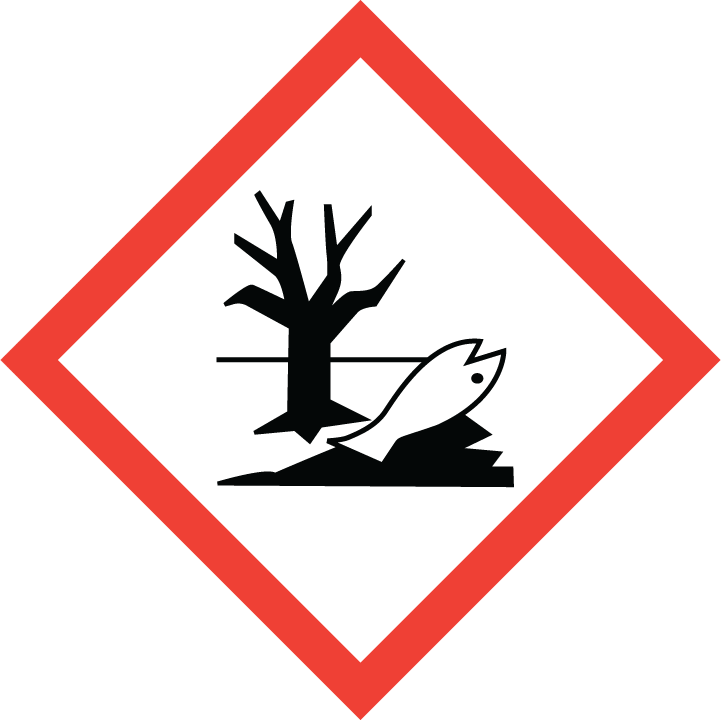 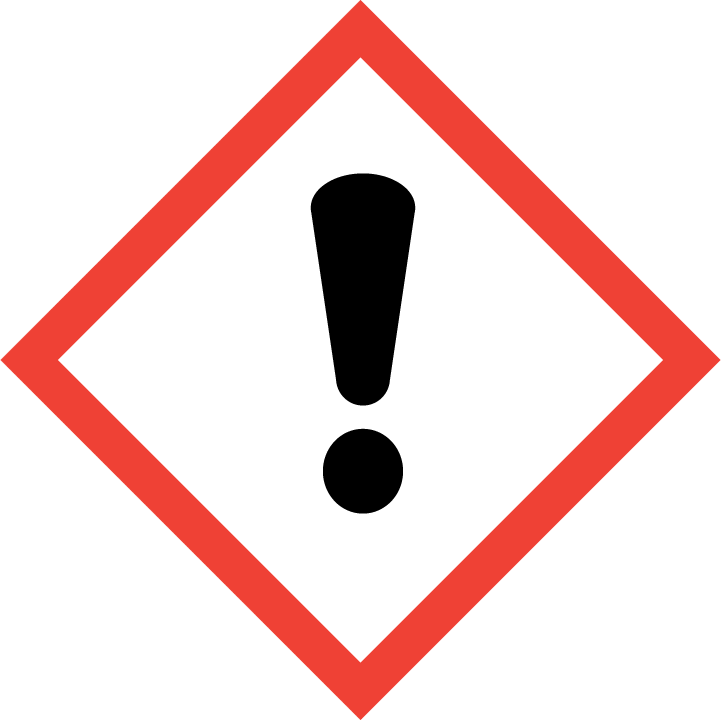 |
|---|---|
| Signal word | Warning |
| Hazard statement(s) | H302 Harmful if swallowed H317 May cause an allergic skin reaction H410 Very toxic to aquatic life with long lasting effects |
| Precautionary statement(s) | |
| Prevention | P264 Wash ... thoroughly after handling. P270 Do not eat, drink or smoke when using this product. P261 Avoid breathing dust/fume/gas/mist/vapours/spray. P272 Contaminated work clothing should not be allowed out of the workplace. P280 Wear protective gloves/protective clothing/eye protection/face protection. P273 Avoid release to the environment. |
| Response | P301+P312 IF SWALLOWED: Call a POISON CENTER/doctor/…if you feel unwell. P330 Rinse mouth. P302+P352 IF ON SKIN: Wash with plenty of water/... P333+P313 If skin irritation or rash occurs: Get medical advice/attention. P321 Specific treatment (see ... on this label). P362+P364 Take off contaminated clothing and wash it before reuse. P391 Collect spillage. |
| Storage | none |
| Disposal | P501 Dispose of contents/container to ... |
2.3 Other hazards which do not result in classification
none
3.Composition/information on ingredients
3.1 Substances
| Chemical name | Common names and synonyms | CAS number | EC number | Concentration |
|---|---|---|---|---|
| 2,4-D-isopropyl | 2,4-D-isopropyl | 94-11-1 | none | 100% |
4.First-aid measures
4.1 Description of necessary first-aid measures
General advice
Consult a physician. Show this safety data sheet to the doctor in attendance.
If inhaled
If breathed in, move person into fresh air. If not breathing, give artificial respiration. Consult a physician.
In case of skin contact
Wash off with soap and plenty of water. Consult a physician.
In case of eye contact
Rinse thoroughly with plenty of water for at least 15 minutes and consult a physician.
If swallowed
Never give anything by mouth to an unconscious person. Rinse mouth with water. Consult a physician.
4.2 Most important symptoms/effects, acute and delayed
no data available
4.3 Indication of immediate medical attention and special treatment needed, if necessary
Basic treatment: Establish a patent airway. Suction if necessary. Watch for signs of respiratory insufficiency and assist ventilations if necessary. Administer oxygen by nonrebreather mask at 10 to 15 L/min. Monitor for pulmonary edema and treat if necessary ... . Monitor for shock and treat if necessary ... . Anticipate seizures and treat if necessary ... . For eye contamination, flush eyes immediately with water. Irrigate each eye continuously with normal saline during transport ... . Do not use emetics. For ingestion, rinse mouth and administer 5 ml/kg up to 200 ml of water for dilution if the patient can swallow, has a strong gag reflex, and does not drool. Administer activated charcoal ... . Monitor body temperature and treat if necessary. /Chlorophenoxy herbicides and related compounds/
5.Fire-fighting measures
5.1 Extinguishing media
Suitable extinguishing media
EXTINGUISH WITH DRY CHEMICALS, FOAM, OR CARBON DIOXIDE. WATER MAY BE INEFFECTIVE. COOL EXPOSED CONTAINERS WITH WATER. /2,4-D ESTERS/
5.2 Specific hazards arising from the chemical
no data available
5.3 Special protective actions for fire-fighters
Wear self-contained breathing apparatus for firefighting if necessary.
6.Accidental release measures
6.1 Personal precautions, protective equipment and emergency procedures
Use personal protective equipment. Avoid dust formation. Avoid breathing vapours, mist or gas. Ensure adequate ventilation. Evacuate personnel to safe areas. Avoid breathing dust. For personal protection see section 8.
6.2 Environmental precautions
Prevent further leakage or spillage if safe to do so. Do not let product enter drains. Discharge into the environment must be avoided.
6.3 Methods and materials for containment and cleaning up
Pick up and arrange disposal. Sweep up and shovel. Keep in suitable, closed containers for disposal.
7.Handling and storage
7.1 Precautions for safe handling
Avoid contact with skin and eyes. Avoid formation of dust and aerosols. Avoid exposure - obtain special instructions before use.Provide appropriate exhaust ventilation at places where dust is formed. For precautions see section 2.2.
7.2 Conditions for safe storage, including any incompatibilities
Storage temp: Ambient /2,4-D esters/
8.Exposure controls/personal protection
8.1 Control parameters
Occupational Exposure limit values
Recommended Exposure Limit: 10 Hr Time-Weighted Avg: 10 mg/cu m. /2,4-D/
Biological limit values
no data available
8.2 Appropriate engineering controls
Handle in accordance with good industrial hygiene and safety practice. Wash hands before breaks and at the end of workday.
8.3 Individual protection measures, such as personal protective equipment (PPE)
Eye/face protection
Safety glasses with side-shields conforming to EN166. Use equipment for eye protection tested and approved under appropriate government standards such as NIOSH (US) or EN 166(EU).
Skin protection
Wear impervious clothing. The type of protective equipment must be selected according to the concentration and amount of the dangerous substance at the specific workplace. Handle with gloves. Gloves must be inspected prior to use. Use proper glove removal technique(without touching glove's outer surface) to avoid skin contact with this product. Dispose of contaminated gloves after use in accordance with applicable laws and good laboratory practices. Wash and dry hands. The selected protective gloves have to satisfy the specifications of EU Directive 89/686/EEC and the standard EN 374 derived from it.
Respiratory protection
Wear dust mask when handling large quantities.
Thermal hazards
no data available
9.Physical and chemical properties
| Physical state | Colorless liquid dependent on purity/. |
|---|---|
| Colour | Liquid |
| Odour | no data available |
| Melting point/ freezing point | 24oC |
| Boiling point or initial boiling point and boiling range | 323oC |
| Flammability | no data available |
| Lower and upper explosion limit / flammability limit | no data available |
| Flash point | Greater than 175 deg F (open cup) /2,4-D esters/ |
| Auto-ignition temperature | no data available |
| Decomposition temperature | no data available |
| pH | no data available |
| Kinematic viscosity | no data available |
| Solubility | Sol in alcohols and most oils /SRP: depends on pH; will hydrolyze at alkaline ph on prolonged standing/ |
| Partition coefficient n-octanol/water (log value) | no data available |
| Vapour pressure | 2.32X10-4 mm Hg @ 25°C |
| Density and/or relative density | 1.269 g/cm3 (20oC) |
| Relative vapour density | no data available |
| Particle characteristics | no data available |
10.Stability and reactivity
10.1 Reactivity
no data available
10.2 Chemical stability
Shelf life of ester formulations varies, depending on the emulsifying system. Some retain satisfactory emulsifying properties after 3 yr. /2,4-D ester salt/
10.3 Possibility of hazardous reactions
no data available
10.4 Conditions to avoid
no data available
10.5 Incompatible materials
no data available
10.6 Hazardous decomposition products
When heated to decomposition, emits highly toxic vapors. /2,4-D esters/
11.Toxicological information
Acute toxicity
- Oral: LD50 Rat oral acute 700 mg/kg
- Inhalation: no data available
- Dermal: no data available
Skin corrosion/irritation
no data available
Serious eye damage/irritation
no data available
Respiratory or skin sensitization
no data available
Germ cell mutagenicity
no data available
Carcinogenicity
A4; Not classifiable as a human carcinogen. /2,4-D/
Reproductive toxicity
no data available
STOT-single exposure
no data available
STOT-repeated exposure
no data available
Aspiration hazard
no data available
12.Ecological information
12.1 Toxicity
- Toxicity to fish: LC50 Lepomis macrochirus (bluegill) 0.9 ppm/24 hr, 0.8 ppm/48 hr /Conditions of bioassay not specified
- Toxicity to daphnia and other aquatic invertebrates: no data available
- Toxicity to algae: no data available
- Toxicity to microorganisms: no data available
12.2 Persistence and degradability
AEROBIC: The 2,4-D isopropyl ester is degraded in a laboratory test by activated sewage acclimated to 2,4-D(1). 2,4-D isopropyl ester is degraded at half the rate of the parent acid which is rapidly degraded(1). In another study, in which 2,4-D isopropyl ester was incubated with domestic sewage microorganisms, 2,4-D isopropyl ester was hydrolyzed and the acid was later decomposed biologically(2). The lag period being 7 days after which the isopropyl alcohol was 98.5% oxidized in 2 days(2). These results are consistent with microbial hydrolysis after a 7 day acclimation period(2).
12.3 Bioaccumulative potential
According to a classification scheme(1), an estimated BCF of 80(SRC), from its water solubility(2) and a regression-derived equation(3), suggests the potential for bioconcentration in aquatic organisms is moderate(SRC). However, like 2,4-D butyl ester, 2,4-D isopropyl ester may also be readily metabolized in fish and therefore should not bioconcentrate(4).
12.4 Mobility in soil
The Koc of 2,4-D isopropyl ester is estimated as 600(SRC), using a water solubility of 37.3 mg/l(1) and a regression-derived equation(2). According to a classification scheme(3), this estimated Koc value suggests that 2,4-D isopropyl ester is expected to have low mobility in soil(SRC). 2,4-D isopropyl ester is adsorbed slightly by clay minerals with the adsorption to bentonite > illite > kaolinite(4). Large amounts of bentonite, illite and kaolinite, namely 6.89, 11.79 and 37.59 grams respectively, would be required to reduce the concentration of 2,4-D isopropyl ester in water from 3 mg/l to 2 mg/l(4).
12.5 Other adverse effects
no data available
13.Disposal considerations
13.1 Disposal methods
Product
The material can be disposed of by removal to a licensed chemical destruction plant or by controlled incineration with flue gas scrubbing. Do not contaminate water, foodstuffs, feed or seed by storage or disposal. Do not discharge to sewer systems.
Contaminated packaging
Containers can be triply rinsed (or equivalent) and offered for recycling or reconditioning. Alternatively, the packaging can be punctured to make it unusable for other purposes and then be disposed of in a sanitary landfill. Controlled incineration with flue gas scrubbing is possible for combustible packaging materials.
14.Transport information
14.1 UN Number
| ADR/RID: UN3348 | IMDG: UN3348 | IATA: UN3348 |
14.2 UN Proper Shipping Name
| ADR/RID: PHENOXYACETIC ACID DERIVATIVE PESTICIDE, LIQUID, TOXIC |
| IMDG: PHENOXYACETIC ACID DERIVATIVE PESTICIDE, LIQUID, TOXIC |
| IATA: PHENOXYACETIC ACID DERIVATIVE PESTICIDE, LIQUID, TOXIC |
14.3 Transport hazard class(es)
| ADR/RID: 6.1(b) | IMDG: 6.1(b) | IATA: 6.1(b) |
14.4 Packing group, if applicable
| ADR/RID: III | IMDG: III | IATA: III |
14.5 Environmental hazards
| ADR/RID: yes | IMDG: yes | IATA: yes |
14.6 Special precautions for user
no data available
14.7 Transport in bulk according to Annex II of MARPOL 73/78 and the IBC Code
no data available
15.Regulatory information
15.1 Safety, health and environmental regulations specific for the product in question
| Chemical name | Common names and synonyms | CAS number | EC number |
|---|---|---|---|
| 2,4-D-isopropyl | 2,4-D-isopropyl | 94-11-1 | none |
| European Inventory of Existing Commercial Chemical Substances (EINECS) | Listed. | ||
| EC Inventory | Listed. | ||
| United States Toxic Substances Control Act (TSCA) Inventory | Not Listed. | ||
| China Catalog of Hazardous chemicals 2015 | Not Listed. | ||
| New Zealand Inventory of Chemicals (NZIoC) | Not Listed. | ||
| Philippines Inventory of Chemicals and Chemical Substances (PICCS) | Listed. | ||
| Vietnam National Chemical Inventory | Not Listed. | ||
| Chinese Chemical Inventory of Existing Chemical Substances (China IECSC) | Not Listed. | ||
16.Other information
Information on revision
| Creation Date | Aug 17, 2017 |
|---|---|
| Revision Date | Aug 17, 2017 |
Abbreviations and acronyms
- CAS: Chemical Abstracts Service
- ADR: European Agreement concerning the International Carriage of Dangerous Goods by Road
- RID: Regulation concerning the International Carriage of Dangerous Goods by Rail
- IMDG: International Maritime Dangerous Goods
- IATA: International Air Transportation Association
- TWA: Time Weighted Average
- STEL: Short term exposure limit
- LC50: Lethal Concentration 50%
- LD50: Lethal Dose 50%
- EC50: Effective Concentration 50%
References
- IPCS - The International Chemical Safety Cards (ICSC), website: http://www.ilo.org/dyn/icsc/showcard.home
- HSDB - Hazardous Substances Data Bank, website: https://toxnet.nlm.nih.gov/newtoxnet/hsdb.htm
- IARC - International Agency for Research on Cancer, website: http://www.iarc.fr/
- eChemPortal - The Global Portal to Information on Chemical Substances by OECD, website: http://www.echemportal.org/echemportal/index?pageID=0&request_locale=en
- CAMEO Chemicals, website: http://cameochemicals.noaa.gov/search/simple
- ChemIDplus, website: http://chem.sis.nlm.nih.gov/chemidplus/chemidlite.jsp
- ERG - Emergency Response Guidebook by U.S. Department of Transportation, website: http://www.phmsa.dot.gov/hazmat/library/erg
- Germany GESTIS-database on hazard substance, website: http://www.dguv.de/ifa/gestis/gestis-stoffdatenbank/index-2.jsp
- ECHA - European Chemicals Agency, website: https://echa.europa.eu/







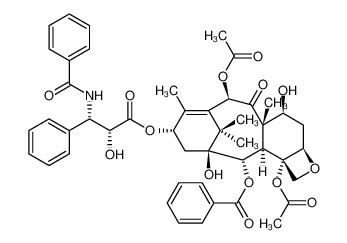

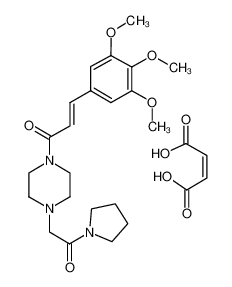
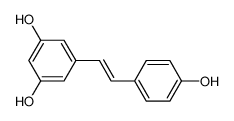

-
-

-
-
-

-
-
-

-
-
-

-
-
-

-
-
-

-
-
-

-
-
-

-
-
-

-
-
-

-
More Suppliers>>Henan Coreychem Co.,Ltd
CHINA
Purity: 0.98%
Lead Time: 3 Day(s)
Price: -
Hangzhou DayangChem Co., Ltd
CHINA
Purity: 99%
Lead Time: 7 Day(s)
Price: -
Santa Cruz Biotechnology, Inc.
UNITED STATES
Purity: 96%
Lead Time: 10 Day(s)
Price: Min $163 /g
Chengdu SinoStandards Bio-Tech Co.,Ltd.
CHINA
Purity: 98%
Lead Time: 7 Day(s)
Price: -
GUANGZHOU WEIBO CHEMICAL Co.,LTD
CHINA
Purity: 96%
Lead Time: 7 Day(s)
Price: -
Chemos GmbH
GERMANY
Purity: 96%
Lead Time: 7 Day(s)
Price: -
YONGYICHEM
COMOROS
Purity: %
Lead Time: 0 Day(s)
Price: -
Ibookbio
WALES
Purity: 96%
Lead Time: 7 Day(s)
Price: -
Crescent Chemical Co., Inc.
UNITED STATES
Purity: 95%
Lead Time: 7 Day(s)
Price: -
Finipharma limited
NANTONG
Purity: 98%
Lead Time: 7 Day(s)
Price: -